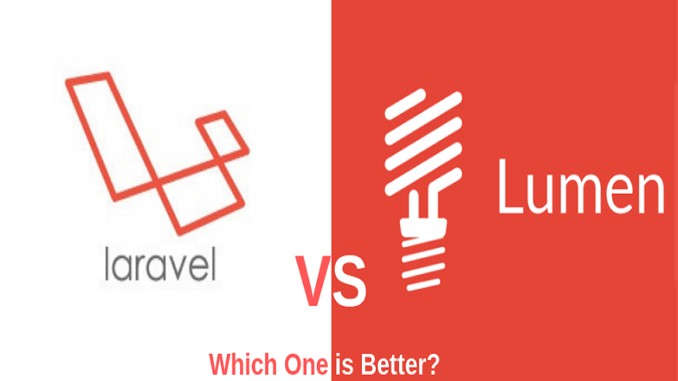
Lumen microframework alleviates a wide array of worries of IT decision-makers. As it follows the single responsibility principle, it does one thing and does it well, which means there is a clear separation of concerns. It involves smaller projects allowing developers to rewrite parts of the system using the appropriate platform without affecting the other parts. The projects scalability and deployment become a lot easier and faster with Lumen microframework. Isolation and resilience are other areas wherein it scores better than others. And if one service crashes, the microframework architecture ensures that other services don’t get impacted, thereby reducing the risk of damage. Developers can also avoid the dreaded ‘dependency hell’ problem – where different parts of the application rely on various versions of the same package. No wonder, Lumen microframework services are increasingly being preferred by IT decision-makers the world over.
As Lumen is a microframework, it is a smaller, faster, and leaner version of a full web application framework. It has the same foundation as Laravel and many of the same components. But Lumen is built for microservices, not so much for user-facing applications although it can be used for anything. It loads components like Eloquent, middleware, authentication & authorization and helps a Lumen Development Company to develop microservices that are light and fast. It focuses on building Stateless APIs.
What are RESTful APIs?
REST is an architectural style for building APIs. It stands for “Representational State Transfer”. It means when developers build an API, they make it in a way that HTTP methods and URLs mean something, and the API has to respond in a way that’s expected.
Why Use Lumen for Creating RESTful APIs?
Lumen microframework supports the best features of Laravel in a lighter version while remaining expressive, intuitive, and simple. It removes all the parts that developers do not need. It is easy to configure, understand, and upgrade. Since Lumen is powered by Laravel’s components, developers can easily upgrade their Lumen application to the full Laravel framework.
Lumen is targeted at microservices – small, loosely-coupled components that usually support and enhance a core project. Hence, it’s more likely to be used when separating a single high-use piece of application. For example, if there is one aspect of a Laravel application that receives drastically more traffic than the rest of the application, developers may choose to build that aspect of the application as a small, separate Lumen application. So, in a microservice architecture, developers might have several small Lumen apps that support one another. By reducing the load on the primary Laravel application, developers can cut server costs since applications built on the micro-framework do not require as much server power as a full Laravel application.
Some of the core benefits that set Lumen Microframeworks apart for the rest are:
* Lumen microframework is faster, lighter and easier to master
* Lumen utilizes a lot of familiar concepts from Laravel such as Eloquent, caching, routing, middleware and it’s service container.
* Lumen is a micro-framework built on top of Laravel’s core components.
* With Lumen, the API integration services will support 1200–1700 requests in a range of 10 seconds with 10 simultaneous requests.
* Its remarkable speed makes it a perfect candidate for building a RESTful API.

Leave a Reply